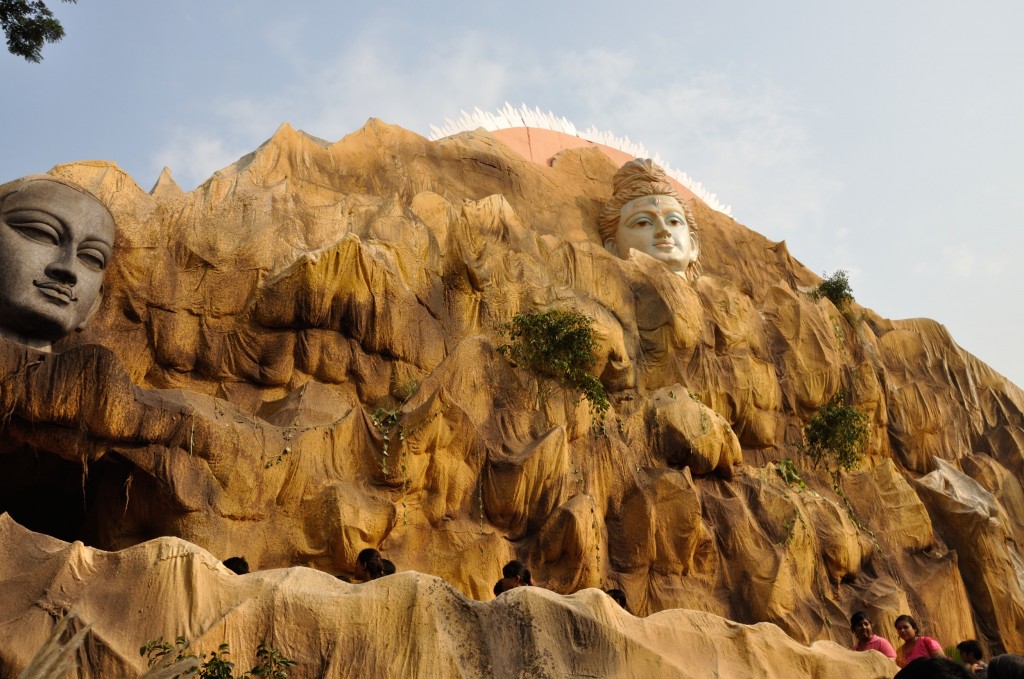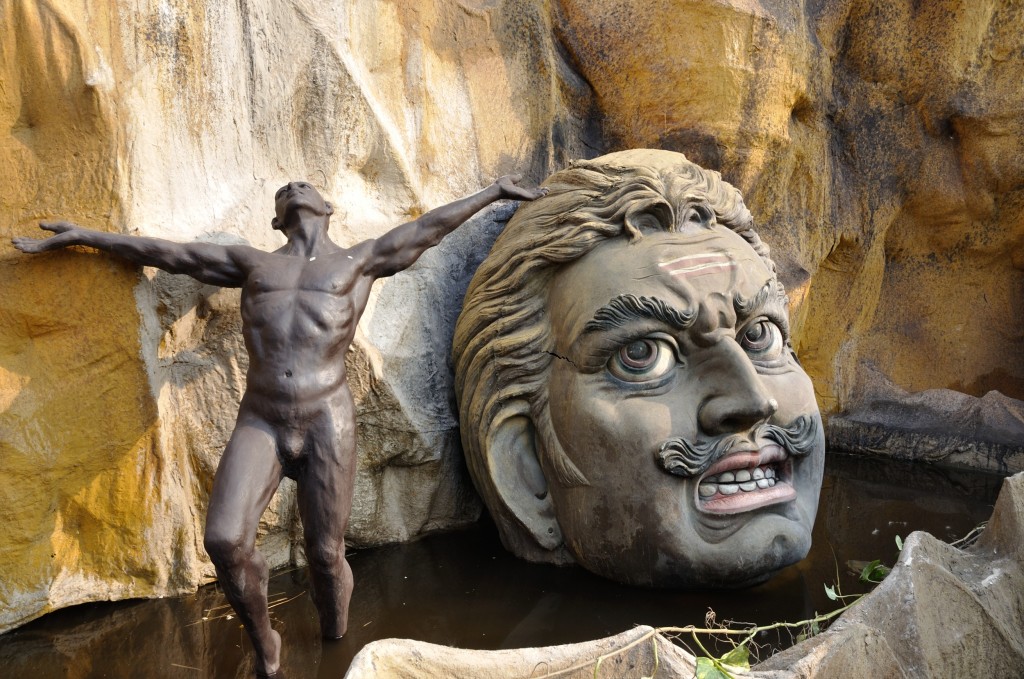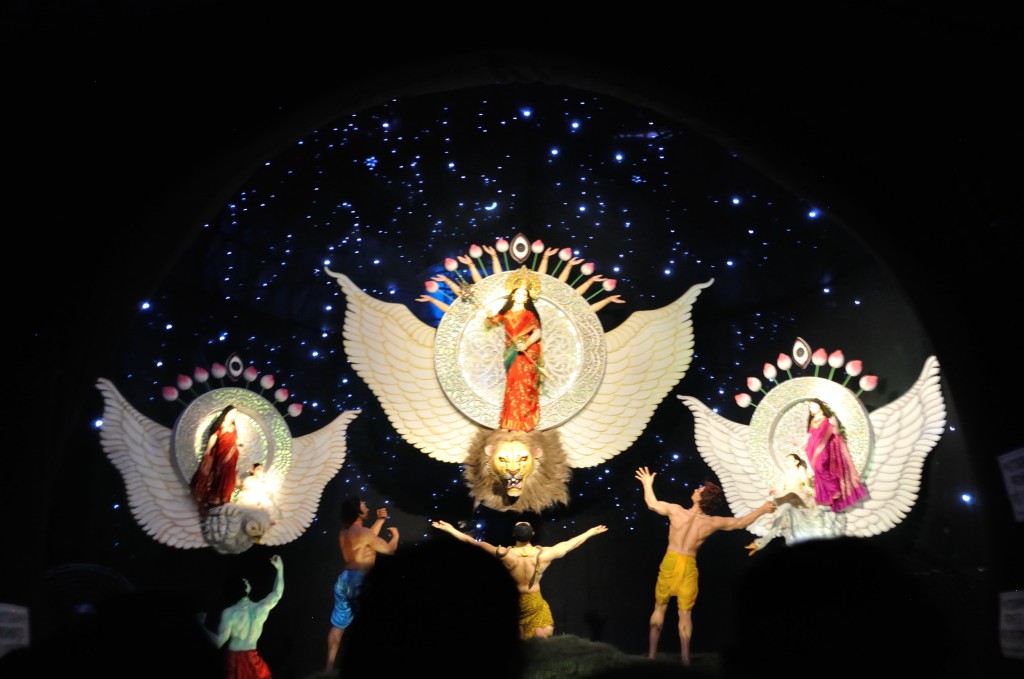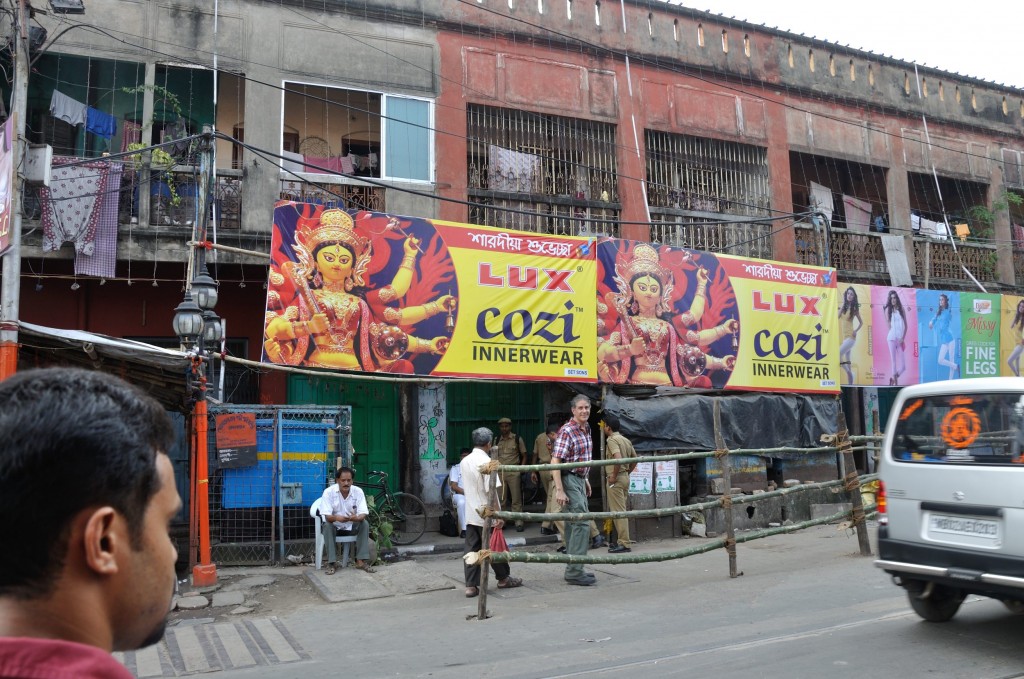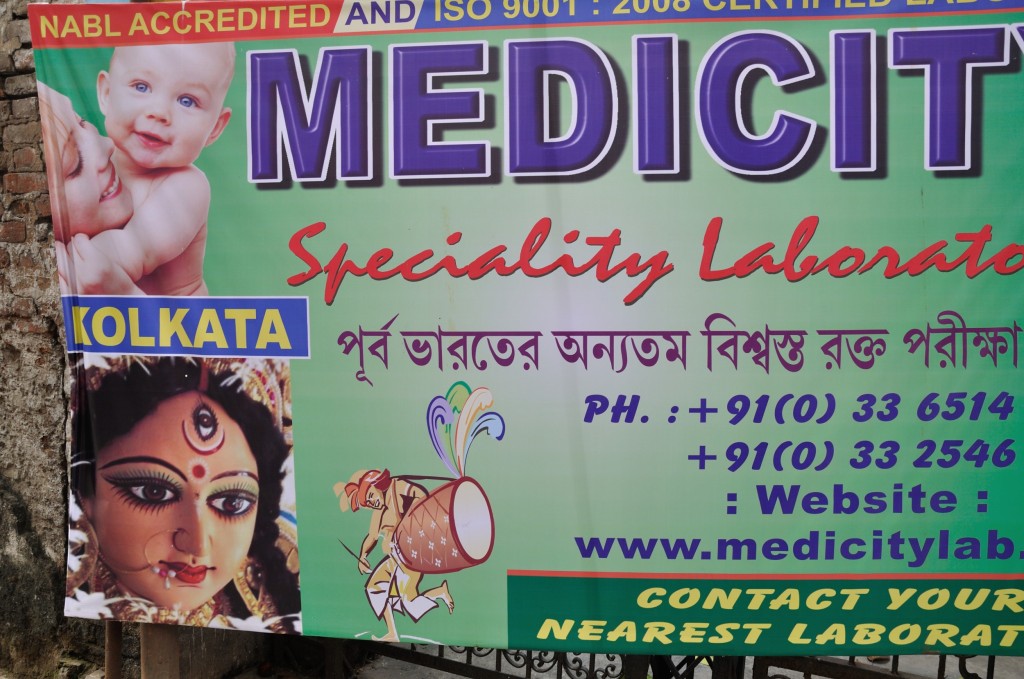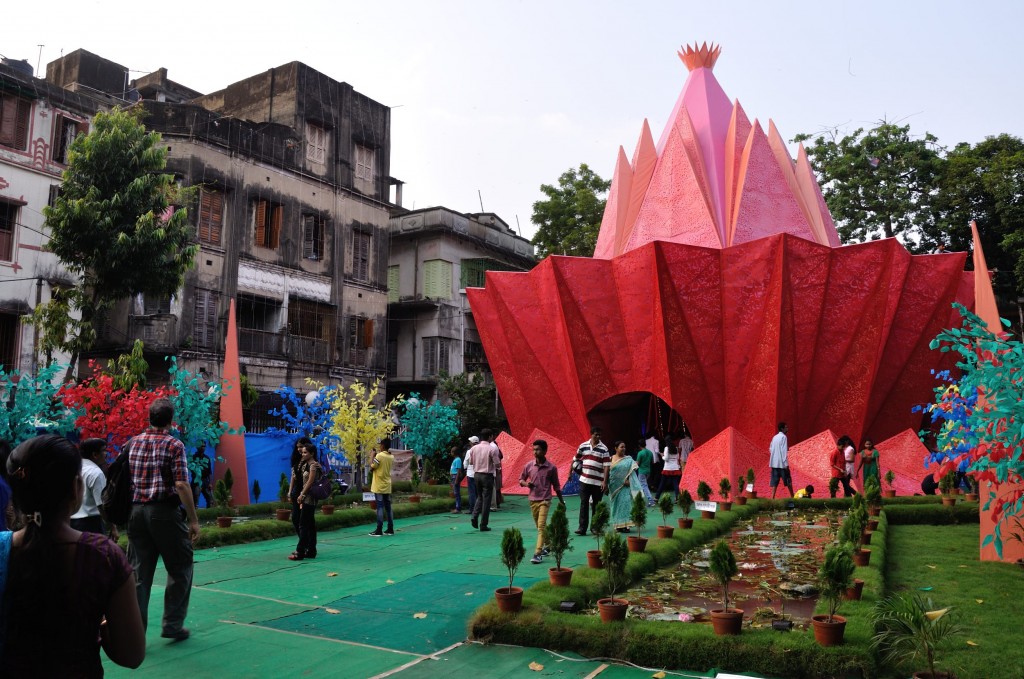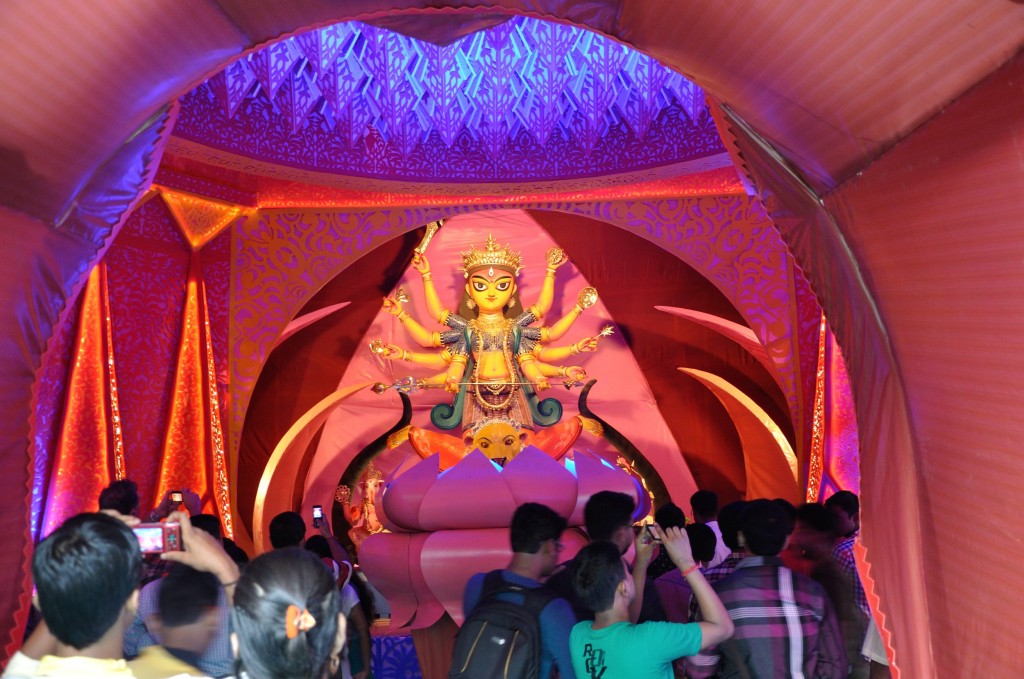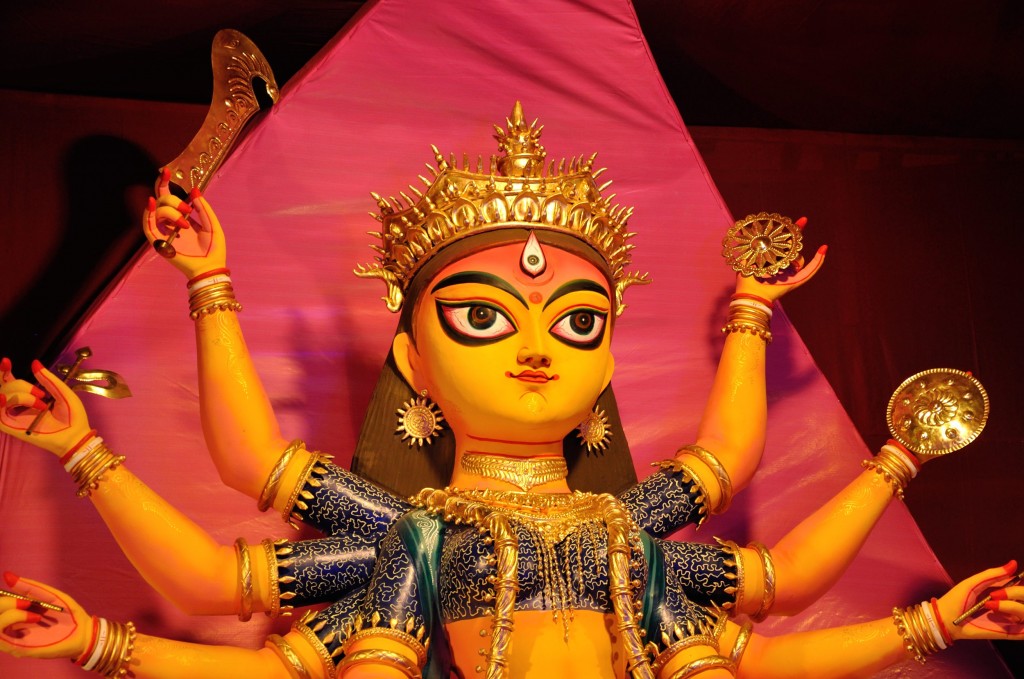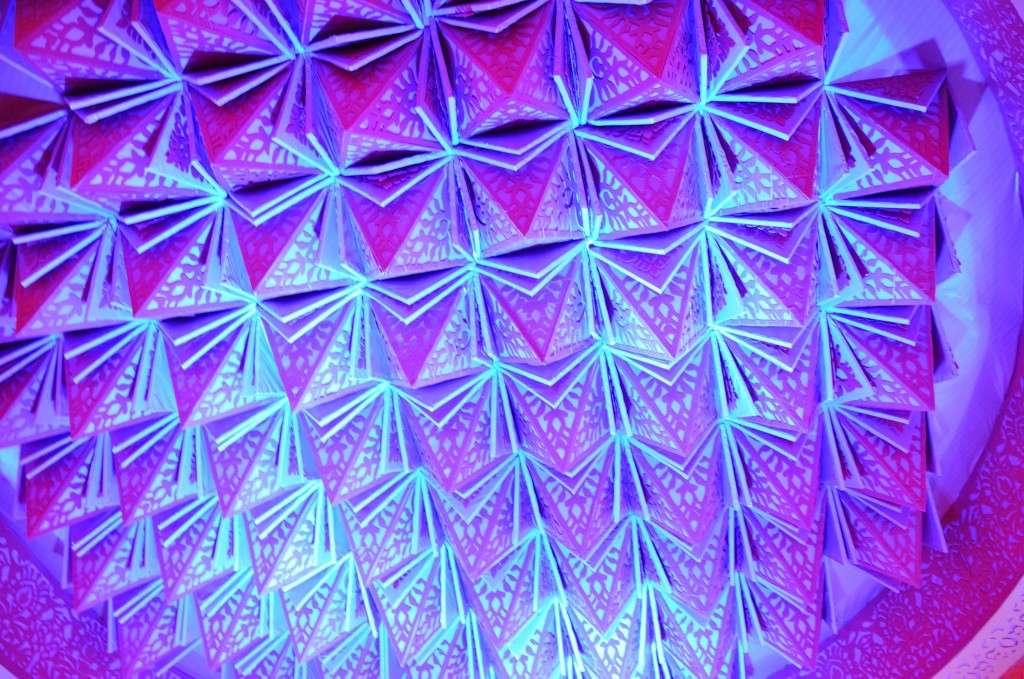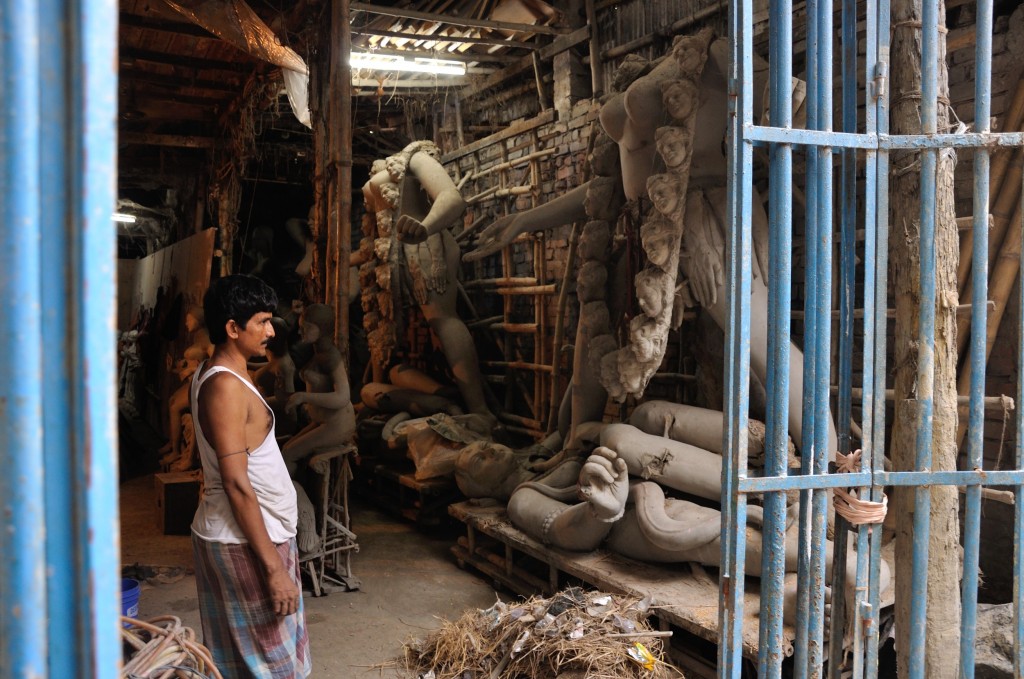Dilipda is preparing no less than five images for Jagadhatri Puja, which is celebrated throughout West Bengal and parts of Odissa about one week after Kali Puja (late October to early November) and exactly one month after Durga Puja.
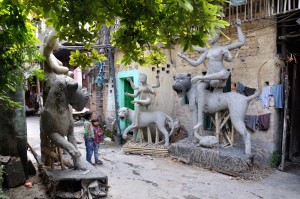
Jagadhatri is considered to be a calm incarnation of Durga. She is known as the “Holder of the World,” and it is believed that if Jagadhatri is not there, the world will fall down! The origins of Jagadhatri Puja are unclear. One account is that the puja was founded by Sarada Devi, the wife of Ramakrishna. Jagadhatri celebrations are observed today with great joy in Ramakrishna missions around the world.
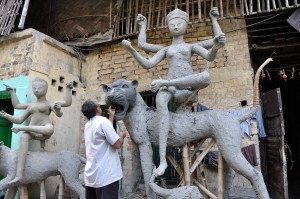
Today, Dilipda is amusing himself by repeatedly telling me that he is “The Dentist To Lions,” as he finely sculpts each feline’s memorable dentition. In researching Jagadhatri’s history and observing the images of many Kumartuli workshops, I saw reference to both lions and tigers.
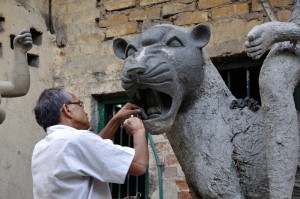


In addition to being accompanied by a lion/tiger, the three-eyed Jagadhatri is described as being the color of the morning sun. She holds a conch and a bow in her two left hands and a chakra and a five-headed arrow in her two right hands.
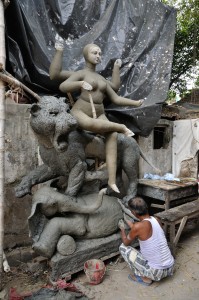
Some of the Jagadhatri images depict the lion stepping upon the elephant demon, Karindrasura, who represents human pride/power. According to Sri Ramakrishna, “Jagadhatri arises in the heart of a person, who can control the frantic elephant called mind.”
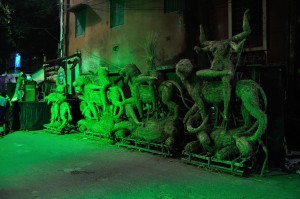
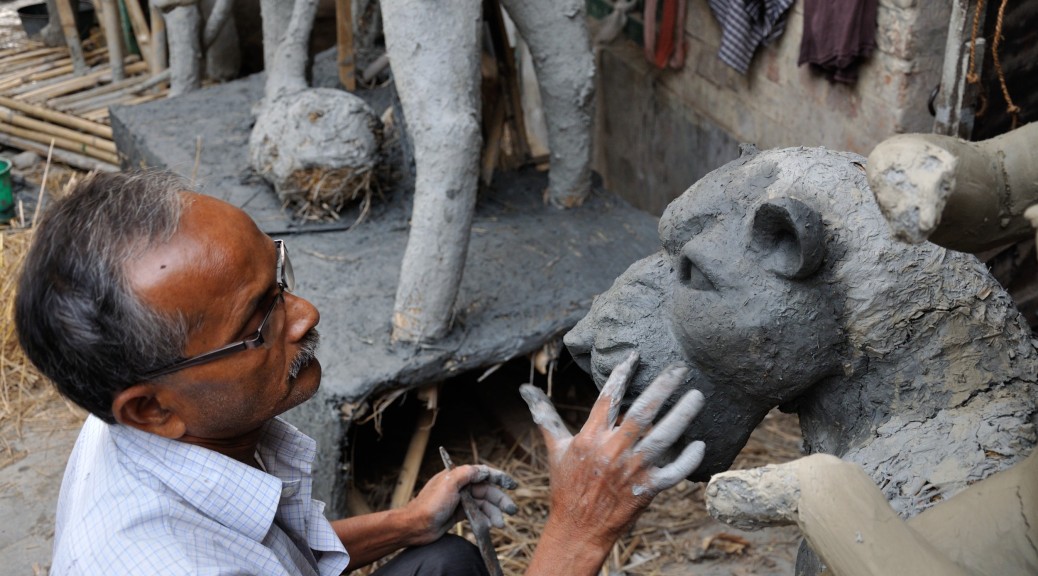


 her very active gesture of stomping on her consort Lord Shiva (other interpretations are that of accidentally doing so, and also that her foot on his body calms her anger).
her very active gesture of stomping on her consort Lord Shiva (other interpretations are that of accidentally doing so, and also that her foot on his body calms her anger).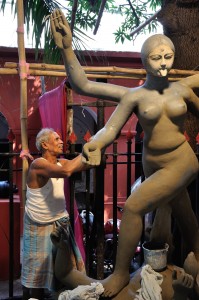 Once the figures of Kali and Shiva had been formed in straw, they moved them to the street outside of the Shovabazar Rajbari, just next to a tiny Shiva shrine. Over the next several days, a bamboo, cloth and paper pandal was built over and around the figures. I enjoyed observing this process immensely, because simply by being present in the situation, I became part of the rhythm of the street.
Once the figures of Kali and Shiva had been formed in straw, they moved them to the street outside of the Shovabazar Rajbari, just next to a tiny Shiva shrine. Over the next several days, a bamboo, cloth and paper pandal was built over and around the figures. I enjoyed observing this process immensely, because simply by being present in the situation, I became part of the rhythm of the street.

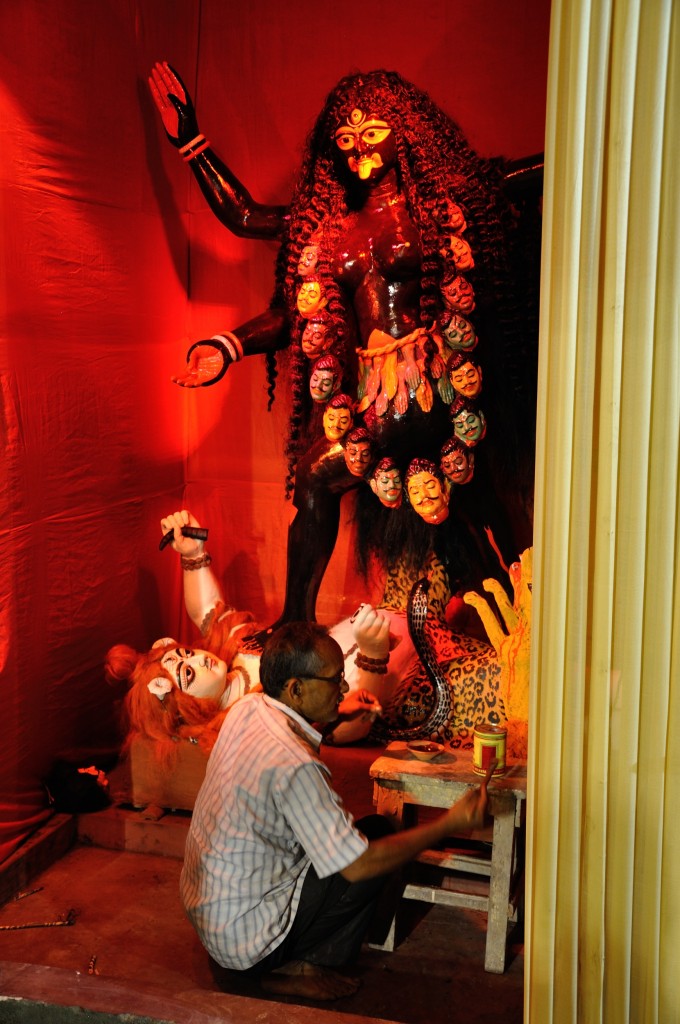

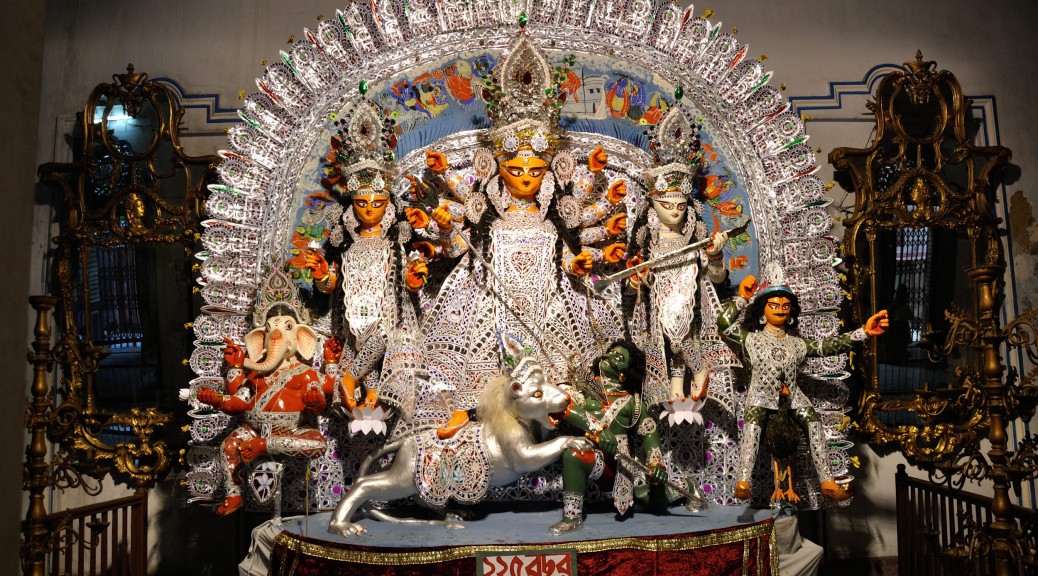
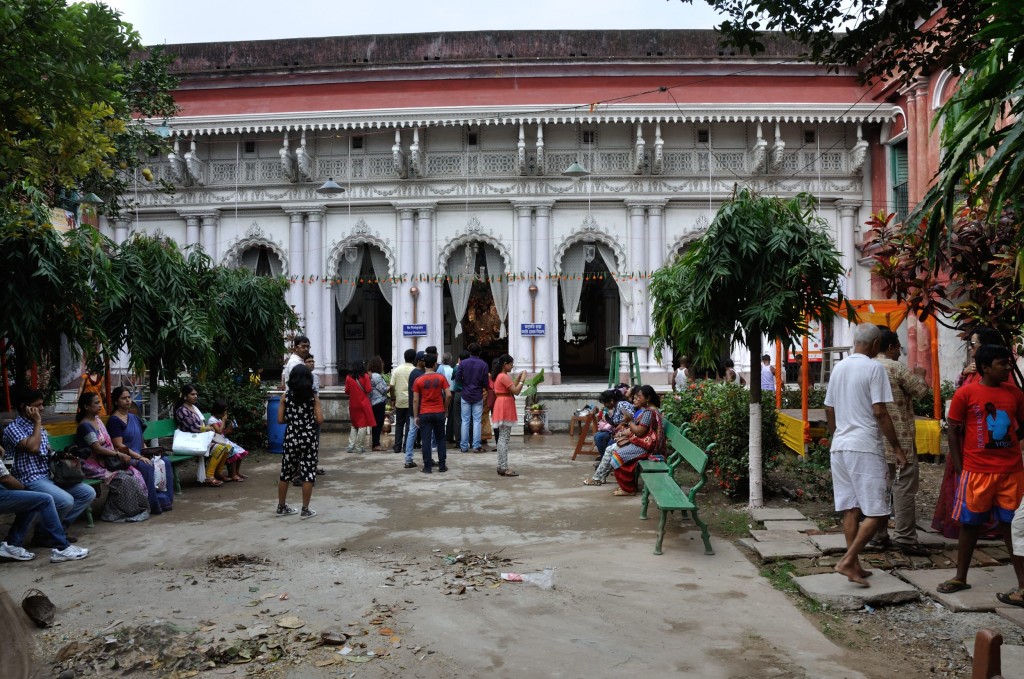 Waiting outside the Rajbari for the pandal viewing to begin later that evening.
Waiting outside the Rajbari for the pandal viewing to begin later that evening. First glimpse of Durga
First glimpse of Durga The Durga pandal with all of the clothing, headdresses, jewelry and other props, except – Durga’s hands are yet to be holding their ten weapons.
The Durga pandal with all of the clothing, headdresses, jewelry and other props, except – Durga’s hands are yet to be holding their ten weapons.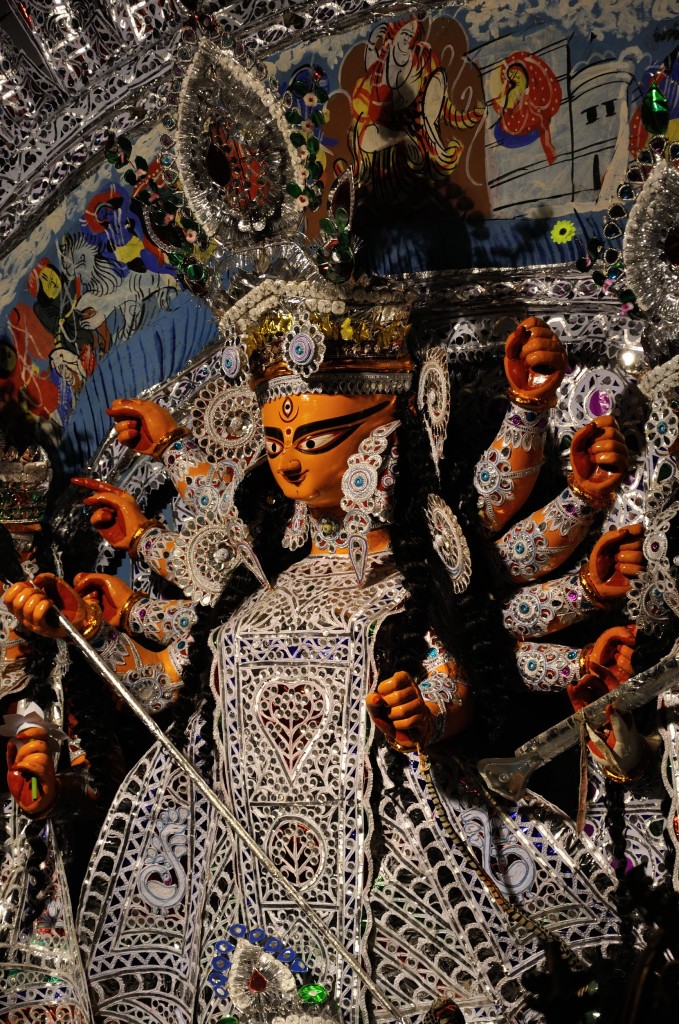 Durga
Durga

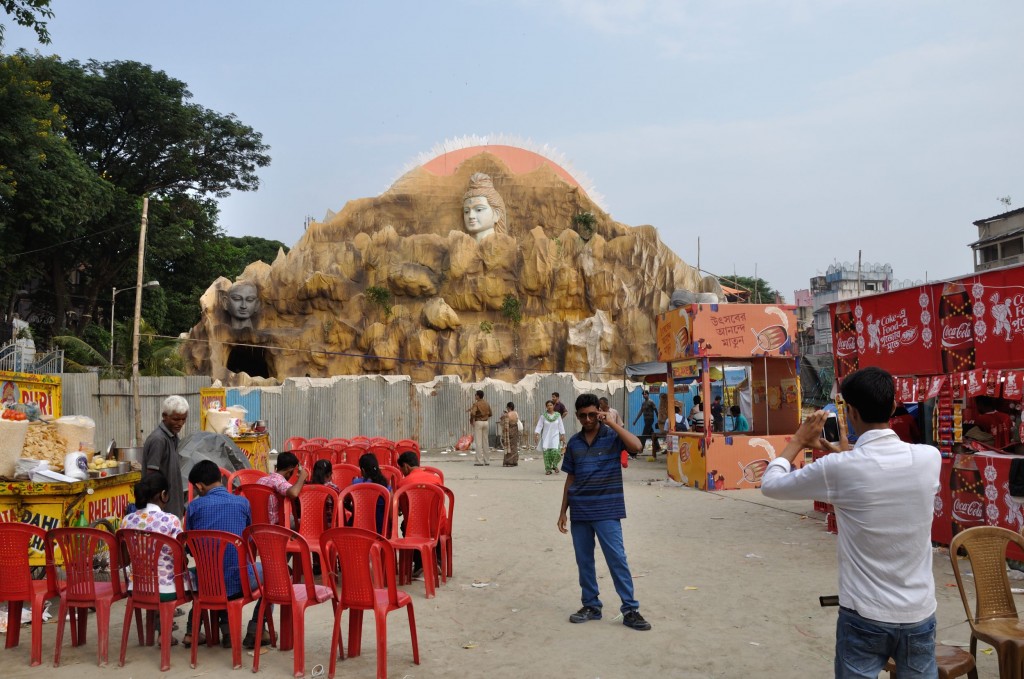 A short distance from the Shovabazar Rajbari was this mountain-themed pandal, studded with giant heads. A few close-ups follow:
A short distance from the Shovabazar Rajbari was this mountain-themed pandal, studded with giant heads. A few close-ups follow: